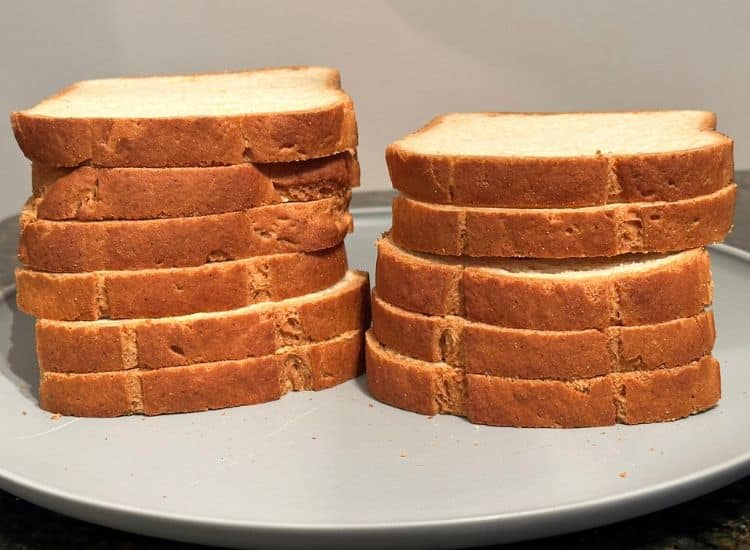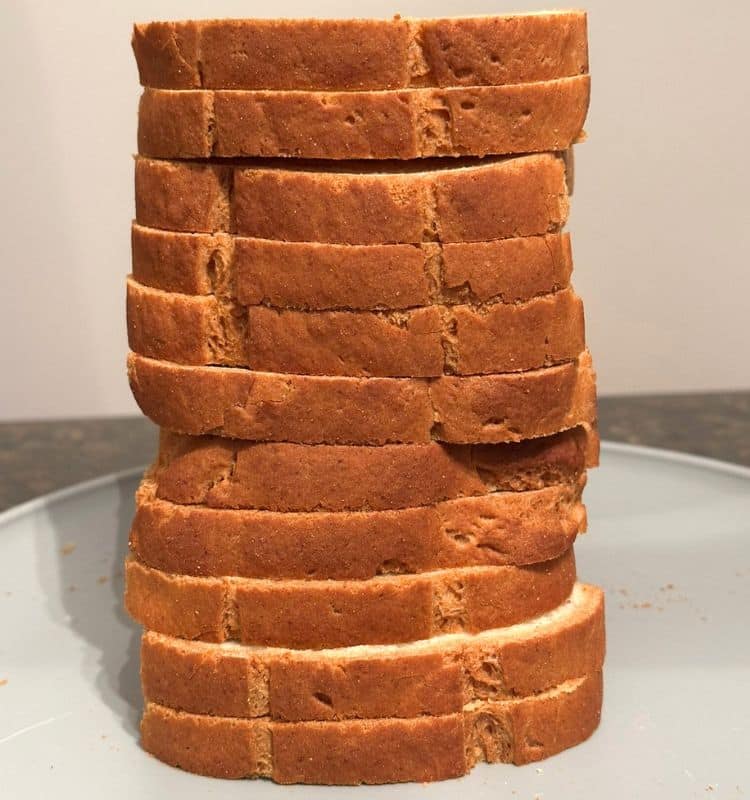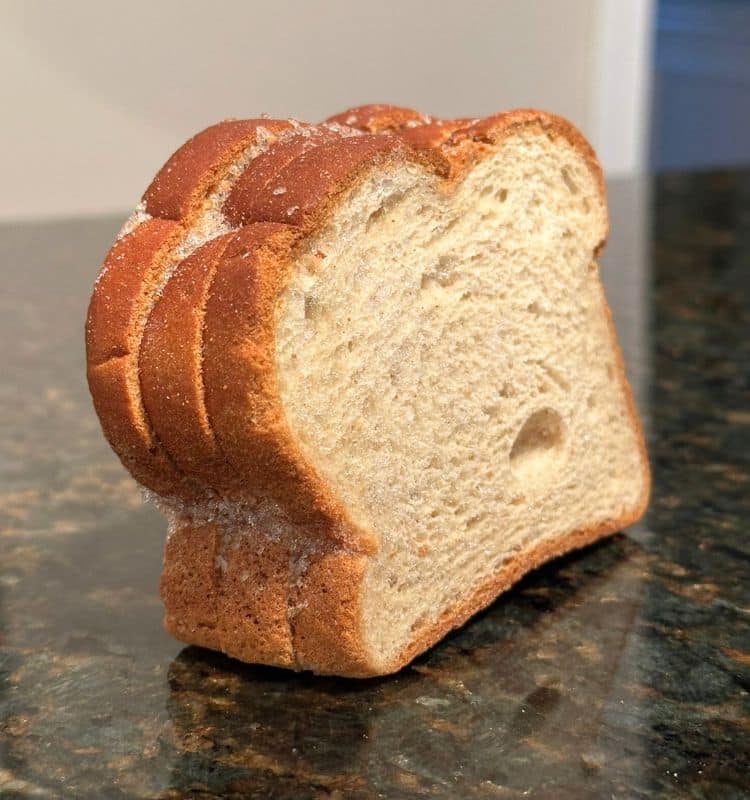Let’s Talk About Gluten-Free Bread
Following a new diet can raise many questions, for obvious reasons. When it comes to gluten, one of the biggest topics people always seem to talk about is bread.
When I first met my wife, she mentioned that she had celiac disease and couldn’t eat gluten. I was genuinely curious about what that meant, which led me down a path of many Google searches.

But when I saw GF bread for the first time, I had even more questions.
Why is gluten-free bread so small? Why is gluten-free bread so expensive?
If this sounds familiar, you’ve come to the right place. Consider this article the ultimate gluten-free guide for beginners.
Let’s start with the basics.
Why is gluten-free bread so small?
Okay, you no longer eat wheat, barley, rye, or malt. So… why do you have to settle for small pieces of bread? WHAT’S GOING ON HERE?!
Gluten-free bread uses alternative flours and natural binders. As a result, these ingredients don’t create the same stretchy consistency as traditional bread.

Traditional bread, on the other hand, gets its structure and rise from gluten, a protein found in wheat.
Gluten creates an elastic network that traps air, giving traditional bread a fluffier texture and larger size.
The real truth…
Now that we’ve covered the science part, let’s look deeper at the evidence.
Yes, gluten-free bread will never be the same size and consistency as traditional bread because it uses different ingredients.
However, we can’t ignore that some GF bread is MUCH SMALLER. I’m talking about 2-3 bites, and it’s gone.

That’s why you need to do your research and check out your local stores for regular-size gluten-free bread. Believe me, it’s out there and it tastes good.
Why is gluten-free bread so expensive?
This question also relates to what we discussed in the sections above. The alternative ingredients required to manufacture gluten-free bread will always cost more money.
This price increase then gets passed on to the consumer… you. Which really sucks for people with celiac disease or those sensitive to gluten.
What happens is that you need to spend more money to eat food that won’t make you sick.
The cost of food safety
Maybe you’ve seen GF labels on food that has also been manufactured in a facility that processes wheat.
This is due to the FDA guidelines on food labeling, which defines gluten-free as any food with less than 20 ppm.

Why didn’t FDA adopt zero ppm gluten rather than less than 20 ppm gluten as one of the criteria for a food labeled “gluten-free”?
At the time the regulation was written, FDA used an analytical methods-based approach to define the term “gluten-free” and adopted less than 20 ppm gluten as one criterion for a food labeled “gluten-free” because we rely on scientifically validated methods for enforcing 21 CFR 101.91. Analytical methods that were scientifically validated to reliably detect gluten at a level lower than 20 ppm were not available at that time. In addition, some celiac disease researchers and some epidemiological evidence suggest that most individuals with celiac disease can tolerate variable trace amounts and concentrations of gluten in foods (including levels that are less than 20 ppm gluten) without causing adverse health effects.
source: FDA
How does this impact the price?
Every company that manufactures food cares about its bottom line. Machines must be powered off, thoroughly cleaned, and inspected to avoid cross-contamination.
And for every minute a machine is down, that company loses money. As a result, they bump up the price of your gluten-free bread to make cleaning the equipment worth it.
Don’t get me wrong; no companies want you to eat gluten by mistake. However, when quality standards are high, following the correct procedures will take time and cost money.
Why is gluten-free bread frozen?
Not all gluten-free bread is frozen, but most of it is.
Once again, the ingredients are to blame. Traditional bread has a lot of preservatives in them so they don’t spoil quickly. Gluten-free bread does not.

But logistics are also to blame. If you live in a rural area where gluten-free bread is hard to come by, freezing it makes more sense.
Just consider the amount of time it takes to ship food to a remote location. Even just a few extra days on a truck can cause bread to spoil.
Moldy bread before it even hits the shelves is a big no-no, and nobody wins. The manufacturer loses money because their product is unsellable, and you’re still stuck searching for GF bread to eat.
So, the next time you’re cursing at your pathetically small piece of gluten-free bread, remember… It’s not your fault.
